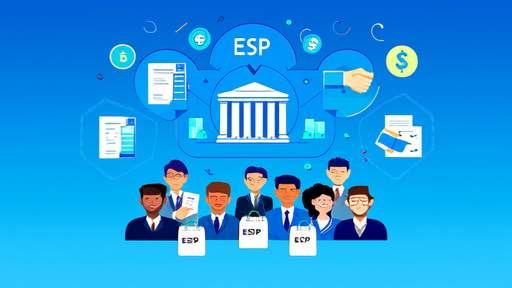The aviation leasing sector has long been a critical component of global aviation finance, providing airlines with flexible access to aircraft without the burden of outright ownership. However, beneath the surface of this thriving industry lies a complex web of risk considerations, particularly when it comes to how financial institutions and regulators assess the risk weighting of these high-value assets. The way aviation leases are categorized and weighted under banking regulations can significantly impact everything from financing costs to the broader stability of the aviation finance ecosystem.
Understanding the Basel Framework's Impact on Aviation Leases
At the heart of the risk weighting discussion for aviation leases is the Basel regulatory framework, which sets international standards for how banks calculate risk-weighted assets. Under Basel III, exposures to aircraft leases are typically assigned risk weights based on factors such as the lessee's creditworthiness, the aircraft type, and the jurisdiction in which the lessee operates. For investment-grade airlines, risk weights might be as low as 20-50%, while for non-investment grade carriers, they can soar to 100-150%. This disparity creates a financing advantage for stronger airlines while potentially squeezing marginal players out of the lease market altogether.
The treatment of operating leases versus finance leases adds another layer of complexity. Under accounting standards like IFRS 16 and ASC 842, the distinction between these lease types has blurred, but regulatory treatment hasn't always kept pace. Many jurisdictions still apply different risk weights based on these legacy classifications, creating potential mismatches between accounting reality and regulatory requirements. This disconnect can lead to capital inefficiencies where banks must hold more capital against certain lease structures than their economic risk might warrant.
The Collateral Conundrum in Risk Weight Calculations
Aircraft as collateral present unique challenges in risk assessment. Unlike real estate or equipment that might depreciate predictably, aircraft values can fluctuate dramatically based on factors ranging from fuel prices to technological obsolescence. The risk weighting frameworks often struggle to capture these dynamics adequately. During market downturns like the COVID-19 pandemic, we saw aircraft values drop precipitously, yet regulatory risk weights didn't adjust correspondingly, leaving banks potentially overexposed.
Residual value risk represents another critical factor that doesn't always receive appropriate consideration in standard risk weight models. An aircraft's end-of-lease value depends on numerous variables including maintenance condition, future demand for that specific model, and even geopolitical factors affecting certain routes. Some regulators allow for residual value insurance to mitigate this risk in capital calculations, but the treatment varies widely across jurisdictions, creating an uneven playing field for international lessors.
Regional Variations Create Cross-Border Complexities
The global nature of aviation leasing clashes with the fragmented reality of financial regulation. While the Basel standards provide a framework, national regulators implement them with local variations. For instance, some Asian jurisdictions apply preferential risk weights to support their domestic aviation industries, while European regulators tend to take a more conservative approach. These discrepancies force global lessors to navigate a patchwork of capital requirements when structuring cross-border transactions.
Emerging markets present particular challenges, where risk weights might be set punitively high due to sovereign risk considerations, even for creditworthy airlines. This dynamic can make it prohibitively expensive for carriers in developing aviation markets to access competitively priced lease financing, despite strong underlying business fundamentals. Some industry groups have called for more nuanced approaches that better differentiate between sovereign and corporate credit risk in these contexts.
Innovative Structures and Their Regulatory Treatment
The aviation finance industry has developed various innovative structures to optimize capital efficiency, from Japanese operating leases with call options (JOLCOs) to enhanced equipment trust certificates (EETCs). However, these structures often face regulatory uncertainty as they don't fit neatly into traditional risk weight categories. The lack of clear guidance can either discourage innovation or lead to regulatory arbitrage where transactions are structured specifically to achieve favorable capital treatment rather than optimal economic outcomes.
Specialized aviation finance institutions have emerged that use alternative approaches to risk assessment, incorporating more granular aircraft valuation models and cash flow analytics. While these methods may better reflect true economic risk, they don't always align with standardized regulatory approaches. This tension between sophisticated, bespoke risk management and one-size-fits-all regulatory capital models continues to shape the evolution of aviation leasing markets.
The Future of Aviation Lease Risk Weighting
As regulators contemplate revisions to the Basel framework and accounting standards continue evolving, the aviation finance industry faces both challenges and opportunities. Many market participants advocate for risk weighting approaches that better reflect the actual performance history of aviation assets, which have demonstrated remarkable resilience through multiple economic cycles. Others call for more consistent global standards to reduce arbitrage opportunities and create a more level playing field.
Technological advancements in data analytics and asset tracking may eventually enable more dynamic, real-time risk assessment of aviation portfolios. However, regulatory systems typically move slower than market innovation, suggesting that the disconnect between regulatory risk weights and economic reality may persist. For now, market participants must navigate this complex landscape, balancing regulatory requirements with commercial realities in one of global finance's most specialized sectors.

By /Jun 3, 2025

By /Jun 3, 2025

By /Jun 3, 2025

By /Jun 3, 2025

By /Jun 3, 2025

By /Jun 3, 2025

By /Jun 3, 2025

By /Jun 3, 2025

By /Jun 3, 2025

By /Jun 3, 2025

By /Jun 3, 2025

By /Jun 3, 2025

By /Jun 3, 2025

By /Jun 3, 2025

By /Jun 3, 2025

By /Jun 3, 2025

By /Jun 3, 2025

By /Jun 3, 2025

By /Jun 3, 2025

By /Jun 3, 2025